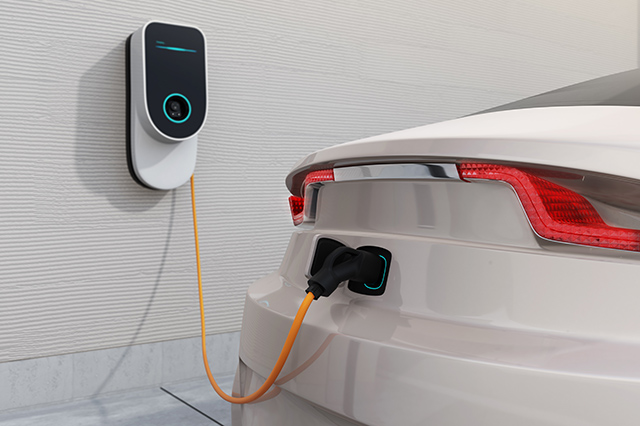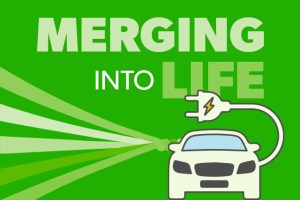There’s little arguing that electric vehicles are the cars of the future. In fact, between automakers pledging to transition to all zero-emission lineups and states banning gas-powered cars, it’s looking more and more like EVs will soon be car owners’ only option. With that in mind, it’s becoming imperative to better understand how to operate these green vehicles – particularly, how to charge them. Since most charging is done at home, this means understanding how EV home charging stations work.
Although EV home charging can be as simple as plugging your car’s battery in an outlet, there are a lot of factors to take into consideration, including charging efficiency, installation and cost.
EV Home Charging
Most electric vehicle owners charge their cars at home. In fact, according to the U.S. Department of Energy, more than 80% of EV charging is done at an owner’s residence. This is obviously the most convenient option – you can charge the car when you’re sleeping and it’s ready to go in the morning – and it’s also the cheapest. Single-family homes generally have low and stable electricity rates.
Charging your EV at home certainly isn’t free but it costs substantially less than paying for gas and is usually cheaper than using a public charging station. The Department of Energy estimates that fully charging an all-electric vehicle with a 100-mile range would cost the equivalent of running air conditioning for six hours. Because they have smaller batteries, plug-in hybrid EVs would cost even less.
When you compare this to the cost of gasoline, you can see how the savings pile up. Over the past few years, gas prices have fluctuated between $1.50 and $4, meaning a person could be spending as much as $1,500 per car each year.
Charging Levels
There are two levels of charging available to you when using your home’s electricity: level 1 and level 2.
If you plug your vehicle into a standard 120-volt wall outlet, you’re using level 1. This is the simplest charging method but also the least efficient. Level 1 charging takes time, adding roughly 3 to 5 miles of range per hour. If you don’t usually drive long distances, this may be more than enough.
Some drivers, however, need to get more miles out of their vehicles on a regular basis. That’s why many EV owners opt to upgrade to level 2, which delivers 240 volts and, depending on the amperage or electrical current, can add anywhere from 10 to 60 miles of range in one hour. The typical level 2 charging station can fully charge an EV overnight.

EV Charging Station Installation Cost
Level 2 charging isn’t a matter of flipping a switch or purchasing a different power cord. Instead, special charging equipment must be installed in your house. These units, known electric vehicle supply equipment, can range in price from a few hundred dollars for an EV charging cable that plugs into a 240-volt, 20-amp outlet to a couple thousand for hard-wired internet-connected smart charger.
You will need to get an electrician to install the charging station or power to supply the station, which will also cost money. A typical installation could cost as little as $300, but there are several factors that could bump up the price, including if your house needs an electrical upgrade or a remodel to allow the unit to connect to the house’s electrical supply. Some states offer charging station rebates and incentives to help defer cost.
Outdoor Home EV Charging
Most owners charge their EVs from the garage, but both level 1 and 2 charging can also be done outside. The only consideration with outdoor level 1 is the length of the power cord. Most EVs come with their own cord but you may need to invest in a longer one that can reach from your home to the vehicle.
You can follow the same process with outdoor level 2 charging, simply running an extended power from your vehicle to the indoor charging station. However, you can also install the charging station itself outside. If you choose this option, install the unit in a location where the wires can be run safely. You’ll also want to choose your charging station wisely. Some are better suited to deal with outdoor elements than others.
Visit AAA’s Electric Vehicle platform for more information on these cars of the future.
4 Thoughts on “What to Know About Charging Electric Vehicles at Home”
Leave A Comment
Comments are subject to moderation and may or may not be published at the editor’s discretion. Only comments that are relevant to the article and add value to the Your AAA community will be considered. Comments may be edited for clarity and length.















I HAVE READ THAT SOME EV BATTERIES HAVE A TENDENCY TO CAUSE FIRES IN GARAGES. DO YOU HAVE FACTS ON WHICH TYPES?
Hi, thanks for the question. Here’s a response from our AAA’s Car Doctor, John Paul: Electric vehicle fires are rare and happen far less frequently than in typical gasoline vehicles. These EV fires are also very difficult to extinguish. Several manufacturers have had recalls and updates on their vehicles, in some cases advising owners not to park them in garages. One on the largest recalls was for the Chevrolet Bolt EV (which is a very nice car), where I believe every Bolt (probably 200,000 worldwide) was recalled due to 14 cars catching fire. Hyundai and Kia (hybrids and conventional models) recently had a large recall and advised owners to park outside. This recall was due to faulty trailer hitch wiring and a faulty circuit in the antilock brake system.
Electric cars have about a .03 percent rate of fires versus 1.5 percent for gasoline car (from online research) and 3.4 percent for hybrid vehicles.
So are hybrid and electric car reliable? Yes but not quite as good as a typical gasoline car based on reports from Consumer Reports and JD Power. -see blow.
The 2022 J.D. Power Initial Quality Study found that owners of electric vehicles and plug-in hybrids reported an average of 240 and 239 problems per 100 vehicles, respectively, compared with 173 for ICE vehicles.
Electric SUVs were the least reliable category of vehicles among 17 types ranked by Consumer Reports in January, due in large part to issues that “often have no connection to the drivetrain,” such as electronics, climate system, body hardware and trim.
Very informative article. Would like to see information on the safety of maintaining and operating a EV. Are there any concerns for senior’s in using an EV?
Very informative. It would be nice to have a real life example of what the costs really are for a real individual. Cost of vehicle. Cost of charging station. Cost to charge. Over the period of owning the vehicle. How long do the batteries last? And what kinds of maintenance is required for an EV.